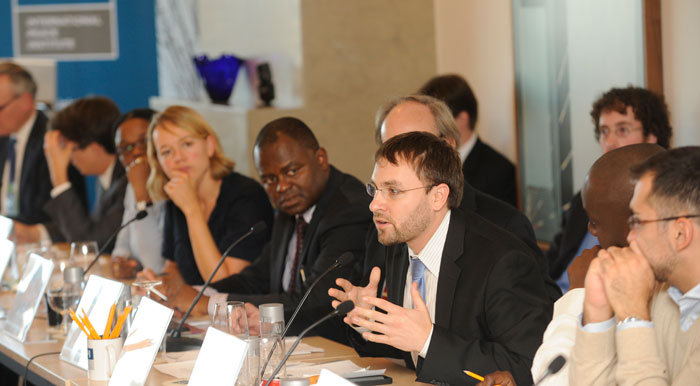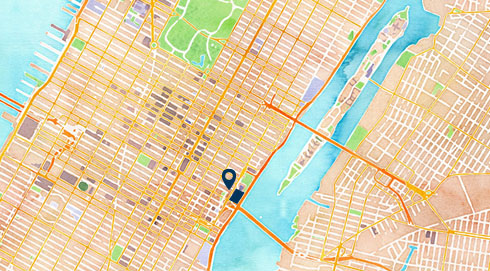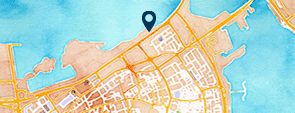
Nick Martin, the President of the organization TechChange captured the essence of how crowdsourcing techniques can strengthen conflict prevention, saying, “In a conflict prevention scenario, good enough information now is probably a lot better than perfect information in two weeks.”
He made the comment during a roundtable discussion on Crowdsourcing and Conflict Prevention co-hosted by IPI and the Bureau for Crisis Prevention and Recovery of the United Nations Development Program (UNDP BCPR) on November 9, 2011.
The meeting was attended by a group of representatives from UN member states, the UN, technology companies, academia, and NGOs. Several presentations and live demonstrations showcased where and how crowdsourcing has been used so far and the special role it plays in crisis mapping in particular.
Crowdsourcing is a methodology involving the use of new technologies and social media for gathering and sharing real-time information generated voluntarily and sometimes anonymously. The aim of the meeting was “to explore further how the use of communication technology can strengthen local and national infrastructures for peace,” said Ozonnia Ojielo of UNDP BCPR. He noted that “the constructive use of newer technology tools provides a crucial opportunity to strengthen broader participation and inclusion in political transformation processes and conflict prevention.”
Mr. Ojielo explained that crowdsourcing was not a replacement for existing frameworks but rather “a complementary tool for early warning,” a tool that provides “a simple and low-cost way of giving opportunity for mobilizing people for localized and participatory preventive multi-stakeholder action in potential conflict situations.”
Crisis mapping is another area where crowdsourcing and user-generated information plays an increasingly large role. During the meeting, Beth Liebert of Google Maps cited several examples, including efforts in the aftermath of the recent earthquake in Japan to map shelters and water supply, where crowdsourcing proved useful and successful: “There’s something about information on a map that people find really useful during a crisis. Something that local and impactful.”
Participants agreed that many challenges remain in applying these technologies for conflict prevention. They range from getting enough people to contribute to and use crowdsourced information, to guarding the personal safety of contributors, and making sure the information is correct.
Maintaining high standards of accuracy involves difficult tradeoffs. Strictly vetting information risks losing the comparative advantage in terms of timeliness provided by crowdsourced information. At the same time, said William Tsuma of the Global Partnership for the Prevention of Armed Conflict (GPPAC), in conflict prevention “the credibility, but also the authenticity of information is just as real as life and death.”
The discussion suggested that the biggest challenge may be ensuring that action is taken based on the information collected via crowdsourcing. Even the best early warning system is only as good as the responses it triggers and to the extent that it enables societies and policy makers to prevent violence from occurring.
Warren Hoge, IPI Senior Adviser for External Relations, moderated the event. ![]() Read transcript
Read transcript ![]() Read meeting summary
Read meeting summary
 Listen to Global Observatory interview with Nick Martin >>
Listen to Global Observatory interview with Nick Martin >>







